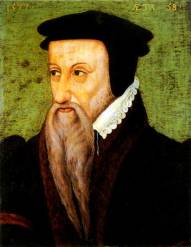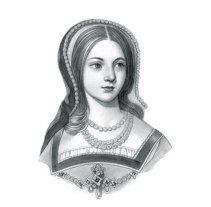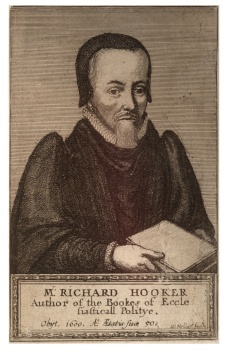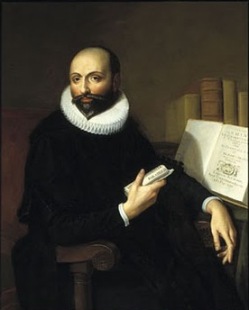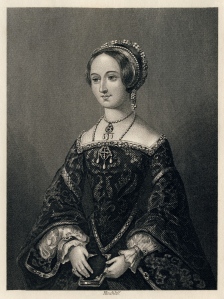“The king’s good servant but God’s first.”
Biographical Sketch
by Brandon Yi, Biola University
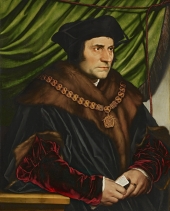
Summary of Life
1478– Thomas More is born on February 6/7 in a prosperous family. Milk Street in London
1484- More attends St. Anthony’s school in London, a Latin grammar school where he was required to converse in Latin
1490- More becomes a page to John Morton and becomes lord chancellor of England.
1492- More is nominated by Morton for Canterbury College. More spends two years studying Aristotle’s Rhetoric and disputations involving public debate.
1493- More leaves Oxford without a degree and enters the field of law at the New Inn in England. He does well due to his past studies in disputation and oration.
1496- Lincoln’s Inn. More’s study of law led him to believe that judicial decisions are ultimately grounded in divine authority which is foundational to human society More prioritizes law in the governance of human affairs.
1499- More and Erasmus meet for the first time. They have a mutual interest in Renaissance humanism. “New Learning”: stresses noble human values and the capacity of man to transform himself and social structures.
1501- More lives in the Carthusian Charterhouse of London for 4 years. He participates in the monks’ spiritual exercises. He realizes here the transience of the things of this world and the passing nature of ambition and success but still embraces life as a journey of merit in efforts. He also begins to study Greek as well as Augustine’s work City of God. More’s core of his spiritual life begins with Life of John Picus where the passion of Christ is depicted. (Passion—Christ’s suffering and ostracizing and condemnation for his virtues)
1504- At age 27, More is elected to Parliament for one session.
1505- More determines that he is not called to be celibate or cloistered. He marries Jane Colt (16 years old). They have four children named Margaret, Elizabeth, Cecily, and John.
1508- More goes abroad to visit the universities of Louvain and Paris. He observes the humanist methods of research.
1509- More is a member of the Mercers’ Guild which is an association of London tradesmen. He is a negotiator and orator. Praise of Folly by Erasmsus. Firm defense of Catholic doctrine against the Protestant teachings.
1510- More is elected to Parliament as a representative of the City at Westminster.
1511- More’s wife, Jane, dies suddenly at age 22 maybe from influenza or childbirth. Within a month, More marries Alice Middleton. She is 8 years older than More. They are dedicated in forming a pious family. More beings to formulate a regular life of prayer, Scripture study, and church attendance.
1512- More serves as a governor and treasurer of Lincoln’s Inn.
1515- More journeys to Bruges in the spring and Antwerp in the summer in order to negotiate commercial and diplomatic treaties. He begins his work on Utopia.
1516 More becomes a member of the council of the Star Chamber. This council dealt with property titles. More completes Utopia in Latin in Louvain, Belgium which was edited by Erasmus.
1517- More goes to Calais to help with commercial disputes between French and English merchants. A second edition of Utopia is published. More is a member of the king’s Privy Chamber and is now in daily contact with Henry.
1518- Service to Henry VIII. More becomes master of requests under Henry. Erasmus sends More a copy of what has become known as Luther’s “Disputation” (Luther explains the fundamental creed of sola Scriptura. Luther rejects the teaching authority of the Church, the infallibility of papal decisions, and papal primacy by divine right.
1520- More aids in the negotiations for Charles’s visit to Canterbury and meets with Francis I in Calais to settle terms of peace between France and England. More is granted knighthood in the same year.
1521- Pope Leo X confers the title “Defender of the Faith” on Henry VIII for his anti- Luther tract, Assertio septem sacramentorum (Defense of the Seven Sacraments), edited by More.
1523- More is elected Speaker of the House of Commons. More writes his first work of apologetics when he composes Responsio ad Lutherum (Response to Luther)
1524- More is appointed high steward at Oxford University.
1525- More acts as principal negotiator in a truce with France. He begins to become watchful of merchants who are importing books by Luther and investigates the spreading of anti- Catholic tracts.
1526- More raids the German steelyard in order to search for Lutheran books and Bible translations. More assists Henry VIII in composing the Letter in Reply to Martin Luther.
1527- The King’s Council devises a censorship order against heretical books and preaching.
1528- More is commissioned by Bishop Tunstal to refute Luther’s books and heretical books.
1530- More meets with Henry VIII at a meeting of the King’s Council in Star Chamber to condemn heretical books. More’s proclamations against heretical books is issued.
1531- Henry VIII puts a new title to himself: supreme head of the Church of England. More wants to resign as lord chancellor.
1533- Pope Clement VII declared Henry and Anne’s marriage to be invalid and threatens to excommunicate Henry. More still continues to write in defense of the Church and papal authority.
1534- More is charged with treason. Anyone who has communicated with Elizabeth Barton face the threat of treason. She prophesied disaster for Henry. More is cleared. However, not long after, More is summoned to appear and swear allegiance to Henry as pope of the English church. More is imprisoned.
1535- Cromwell offers More another opportunity to reconsider but More refuses. More is interrogated several times until he is officially found guilty and sentenced to be hanged. More was too expert a lawyer and too confirmed in knowledge of self to be tricked into treason. However, Sir Richard Rich, one of Cromwell’s minions, found grounds to accuse More. He was to be cut down while still living. His bowels pulled from his body and burned in his sight. His genitals cut off with his head. His body was to be quartered and put on view to the public. But just before death, his sentence is just beheading for Henry feared riots would occur. More is hanged at Tower Hill.
Influences
- Anthony’s school: learning Latin
- Canterbury College, Oxford: studied rhetoric, disputations involving formal oratory and public debate
- John Colet: spiritual advisor for More 1505
- Erasmus: mutual interest in Renaissance humanism. Edits Sends More the copy of Luther’s Disputation.
- Augustine: the two social orders—love of self and contempt of God vs. focus on God and abnegation to self. More spends his life trying to reconcile these two.
- John Fisher: close friend of More who is a firm defender of Catholic doctrine against the Protestant teachings
- Alice Middleton (2nd wife): establishes a pious family and leads More to institute a regular life of prayer, Scripture study, and church attendance. He becomes an affectionate, demonstrative father.
Theology
Thomas More was against the Protestants. Thomas More was not as infuriated with Luther as with the results of Luther’s work. More found the works to be heretical because they went against the beliefs and doctrines set by the Catholic Church. More believed in a united and peaceful body of Christendom. The Reformation was spreading new doctrine like disease and was contaminating the nation. Because the Reformation was attacking the Church, More felt the attack come straight to his own morals. More desired for all Christians to be under one head. This was the reason why More was quick to exterminate the writings of Luther and was always investigating the spread of Luther’s works. He believed that heresy was incurable and that it was his ultimate duty to the King to rid of heresy. When More dies, his concluding words were “the king’s good servant, but God’s first.” His death resulted directly from his belief that no lay ruler could have jurisdiction over the Church of Christ.
Works
- Utopia 1516
- The purpose for Utopia was to implement discipline. There is no real perfect society. There is always disagreement within peoples’ lives because everyone’s interests are somewhere else. The only real way to get the closest to the perfect place is by placing everyone under a certain discipline and that discipline is God’s instruction.
- Sadness of Christ 1535
- More writes with the theme of Christ. He was imprisoned and wrote this during the last months of his life. He writes that Christ is the one who gives comfort and strength in tribulation. We should only trust in the will of God. He seeks only what is good for us. There is eternal life that is promised to the saints. More is extremely fearful of his death, but meditating on the suffering and crucifixion of Christ gives More courage to face the prospect of his coming torture and death.
- Responsio ad Lutherum 1523
- More explains that he completely sides with Catholicism. More upholds the pope’s supreme spiritual authority. He invokes both the tradition and the historical identity of the church.
- More is extremely outraged over the heretical teachings of Luther on the sacraments, celibacy, papal authority, the Mass, and the Peasants’ Revolt.
- The Confutation of Tyndale’s Answer 1532
- More addresses the conflict between Roman Catholicism and Protestant Lutheranism:
- Protestantism: inner prayer, faith alone, personal redemption through Christ
- Catholicism: ritual worship, good works, and the sacramental system predicated on an ordained clergy.
- More insists that the one, holy, Catholic Church is the only true embodiment of Christ’s mystical body on earth.
- The Church is still holy in spite of the wickedness of some of its members and even hierarchy.
- More addresses the conflict between Roman Catholicism and Protestant Lutheranism:
Secondary Works
Guy, John. Thomas More. New York, NY: Oxford University Press, 2000
Reynolds, E. E. Thomas More and Erasmus. New York, NY: Fordham University Press, 1965
Thornton, John F. & Varenne, Susan B. Saint Thomas More Selected Writings. New York, NY: Vintage Books, 2003
Bibliography
Guy, John. Thomas More. New York, NY: Oxford University Press, 2000
Reynolds, E. E. Thomas More and Erasmus. New York, NY: Fordham University Press, 1965
“Sir Thomas More and the Heretics.” Sir Thomas More and the Heretics, History Today. Accessed November 16,2016. http://www.historytoday.com/john-guy/sir-thomas-more-and-heretics
“Thomas More.” New Catholic Encyclopedia. Detroit: Thomson/Gale, 2003
Thornton, John F. & Varenne, Susan B. Saint Thomas More Selected Writings. New York, NY: Vintage Books, 2003
